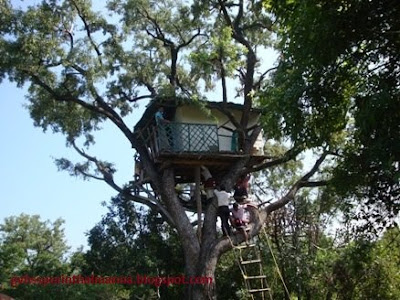With the initiative of the VHSE Nature club, a Nature Education Camp was arranged at Chinnar Wildlife Sanctuary. As part of the camp we also visited Eravikulam National Park.
On the way to Chinnar...
It was green everywhere!
The journey was the best part!
Chinnar - A long view.
Chinnar wildlife sanctuary is lying at Devikulam taluk of Idukki district. It was declared as a wildlife sanctuary in 1984. It is located in the rain shadow region of the Western Ghats. It is the second habitat for the endangered giant grizzled squirrel in India. It spreads in an area of 90.422 sq.kms. It is one of twelve Wildlife Sanctuaries among the protected areas of Kerala. Chinnar has the unique thorny scrub forest with Xerophytic species. The undulating terrain with rocky patches increases the scenic splendour of the sanctuary. Since it is in the rain shadow region of the southern Western Ghats, the average annual rainfall is only 500 mm, spread over about 48 days.
Into the jungle...
The trekking was a fantastic experience!
A close encounter with elephants
Eco-tourism is promoted and organized jointly by the Forest Department and the Eco Development Committees (EDCs) of the local tribal communities, the objective is to empower latter and involve them in the conservation of the forest ecosystem.
Koottar - Here the Chinnar river joins with Pambar river.
Camp members at Chinnar wildlife sanctuary
Camp members at Chinnar wildlife sanctuary
Tourists can enjoy the natural walk along the Chinnar and Pambar river banks. This is an amazing place for the trekkers also. Trek paths most commonly used are the Chinnar – Chullipetty and Chinnar – Koottar.
There are 965 species of flowering plants in the sanctuary. Ecoregions of the sanctuary comprise mostly grassland and wet grasslands vegetation and some South Western Ghats montane rain forests and high shola at the higher western elevations. South Western Ghats moist deciduous forests at mid elevations give way to dry deciduous forests and thorny scrub forests in the lower dryer eastern edges of the valley. The major Xerophytic species in the throny scrub forests are Acacia arabica (Karivelam), Acacia leucofolia (Velvelam), Acacia concinna (Cheevaka), Prosporis juliflora (Prosopis) and Opuntia dillenii (Kallimul). An extensive Sandalwood forest at Marayur is an added attraction.
Santalum album (Chandanam), Anogeissuslatifolia (Mazhukanjiram), Tamarindus Indica (Puli), Terminialia arjuna (Nirmaruthu), Pongamia lanceolata (Ventheku), Dalbergia latifolia (Rosewood), Tectona grandis (Teak), Cassia Fistula (Konna), Terminalia bellerica (Thanni), Emblic officianalis (Nelli) etc. are the common species at Dry Deciduous Forests. Rhododendrom nilagiricum (Kattu Chemarathi), Elaeocarpus recurvatus (Bhadraksham) and Strobilanthus kunthianus (Neelakurinji) grown in High Sholas and Wetland areas.
34 species of Mammals live here, including many Panthers and Spotted deer, 50 -60 Indian Elephants, Gaur, Tigers, Sambar Deer, Common langur, Hanuman monkey, threatened Nilgiri Tahr, vulnerable Rusty-spotted Cats and about 240 of the only vulnerable Grizzled Giant Squirrels in Kerala. 245 species of birds including Yellow-throated Bulbuls. 52 species of reptiles including 29 species of snakes, Indian Star Tortoise and the largest population of vulnerable Mugger Crocodiles in Kerala live in the Sanctuary. Most common of the 42 species of fishes observed in the Chinnar and Pambar rivers are Garra mullya minnows, River-carp baril, Giant Danio and the endangered hill stream game fish Deccan Mahseer. 22 amphibian species live in the Sanctuary. There are 156 species of butterflies.
We had informative class in the evening by Wildlife warden and other Personnel




































good
ReplyDeletewww.entemalappuram.com
ReplyDeletenice photos
ReplyDelete